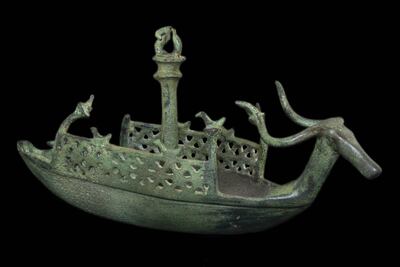A UK exhibition on the Mediterranean islands will feature more than 200 artefacts from Sardinia, Cyprus and Crete.
The lent items, most of which are in the UK for the first time will go on show at Cambridge’s Fitzwilliam Museum and include bronze figurines associated with Sardinia’s lost 4,000-year-old Nuragic civilisation.
The civilisation's ancient burial grounds have yielded bronze figurines that shed some light on their mythological and religious identity, despite having no written records.
Nuragic bronze figurines represented warriors with helmets bearing long curved horns, animal-headed ships and imaginary entities belonging to a unique culture.
At the peak of its power, the Nuragic culture was defined by megalithic stone towers called nuraghi.
Archaeologists estimate that there were once more than 10,000 nuraghi across Sardinia, although only a few thousand survive.
“This exhibition brings together three years of research, community engagement and active archaeological and anthropological practice in the Mediterranean islands," said the exhibition’s curator, Dr Anastasia Christophilopoulou.
“We must picture ourselves in one of these islands to better understand how these unique objects reveal self-perceptions, community identity and the islands’ long histories.”

The bronze figurines from Sardinia are being loaned from the National Archaeological Museum, Cagliari, in Sardinia’s capital.
“For the Archaeological National Museum of Cagliari, the participation in the exhibition and in the connected research project is a great opportunity of underlining the richness and manifoldness of Sardinian Mediterranean connections throughout the ages," said Dr Francesco Muscolino, the museum’s director.
“The inclusion of Cagliari Museum antiquities, most of which have never travelled to the UK or abroad, gives a substantial contribution in creating comparisons with similar objects belonging to coeval insular civilisations, thus vividly showing the links among some of the main Mediterranean islands.”
Other items in the exhibition will include figurines from what is commonly referred to the Cypriot Terracotta Army, and a rare 3,500-year-old ox-hide-shaped ingot from the Heraklion Museum in Crete.
Islanders: The Making of the Mediterranean will run at the museum from February 24 to June 4.





